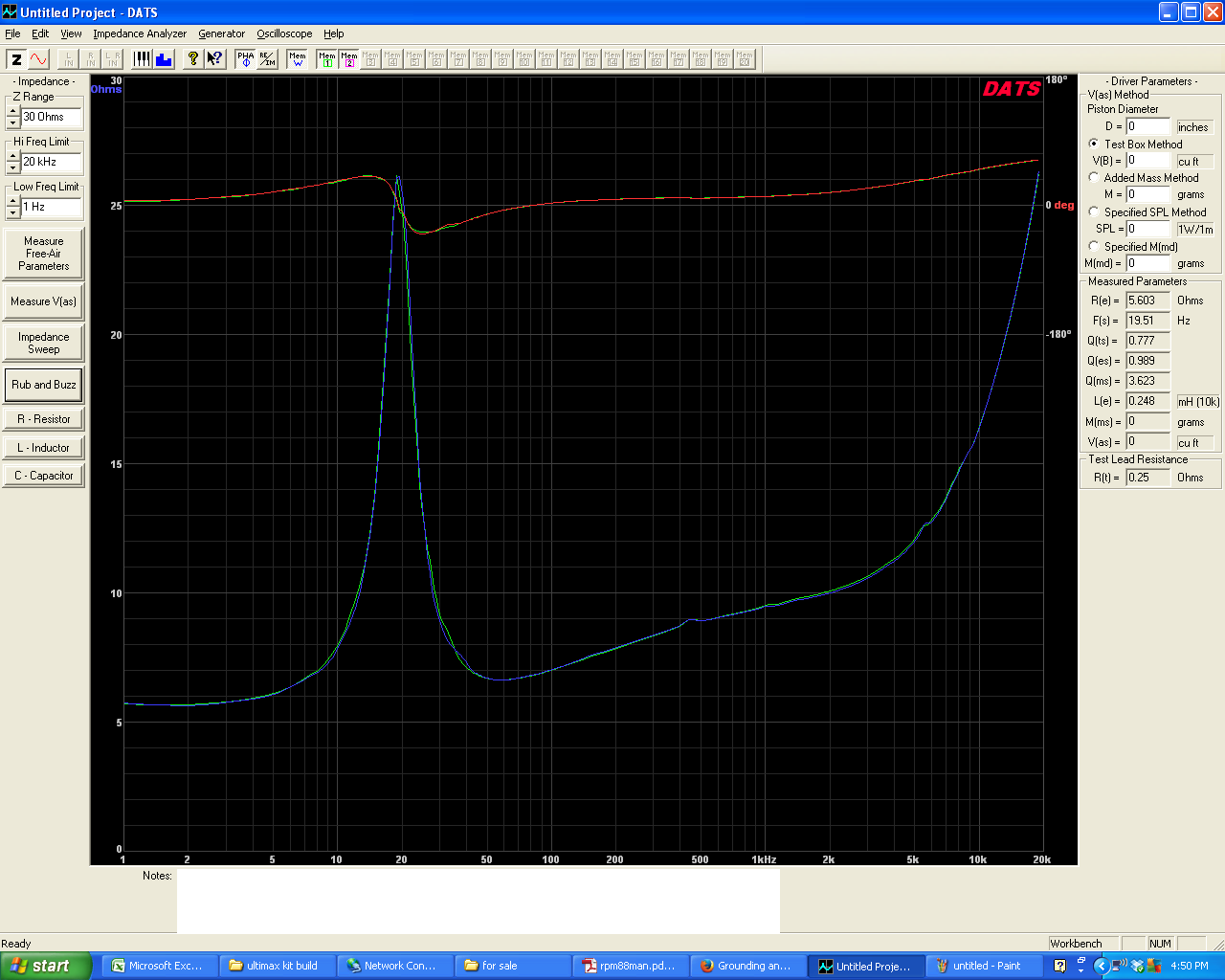I use a pair of King 60V Maraschinos to drive my subwoofer system. I have an infinite baffle subwoofer system with four Acoustic Elegance IB15HT drivers in each manifold. I have two manifolds for a total of 8 drivers. The manifolds are mounted under the floor and slightly outside and behind my mains (GR-Research LS6's).
These amps do infrasonics like nothing I've every used. Deep, powerful and accurate. The drivers are 8 ohm nominal and wired in parallel for a two ohm load. The song Bass I Love You (not audiophile

) has a tone played at 7 Hz. At 7 Hz, the drivers present a 1.625 ohm load to the amp. The Maraschinos are not bothered by it at all. Here is the impedance chart of a driver:

Here is an FFT of the song:

If I put a 12 Hz low pass with a 48 dB/octave slope this is what is left:

The sound and feel of this in the room is incredible. That low 7 Hz tone provides a very powerful shake. I decided to push the amps even further. For the past week I used just one amp with 8 drivers wired in parallel for a .8125 ohm load at 7 Hz. The Maraschino handled it just fine.
I think several things contribute to these amps ability to play bass extremely well:
1. The constant voltage regardless of load
2. Being flat to DC with no capacitors providing rolloff
3. The low output impedance
Recently I had a chance to use the amp with a Stereo Integrity HS24-D2 subwoofer driver in a 15 cubic foot box. We played a bunch of infrasonic content from movies.
Recent measurements show this driver to have the lowest infrasonic distortion of any driver tested so far. Large drivers will typically have better bass because the driver doesn't have to move as far for a given SPL and can return to stop quicker. Multiple small drivers can match the output levels, but not the low distortion. The Maraschino had great control over the 24" driver and was able to produce tremendous infrasonic output. In fact, the owner of the driver said the Maraschino was putting out as much infrasonic voltage as his bridged Behringer EP4000. The Maraschino, though, was completely passive and running cool during playback.